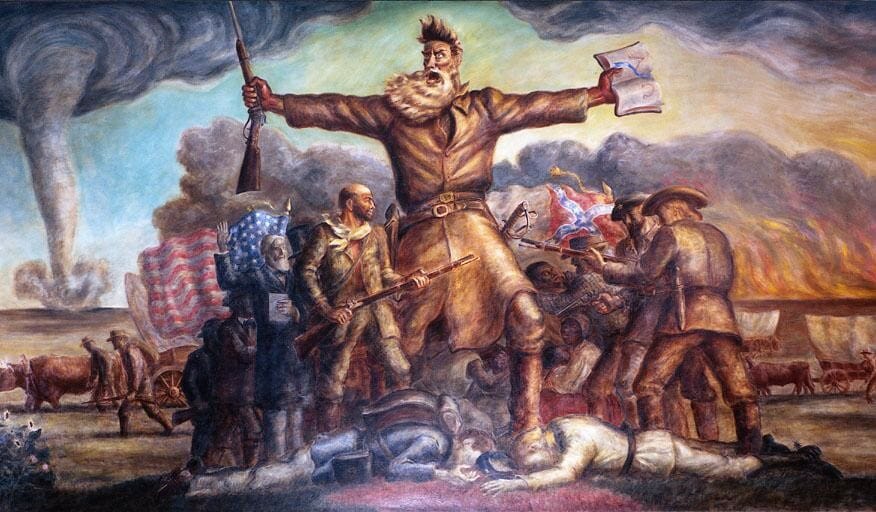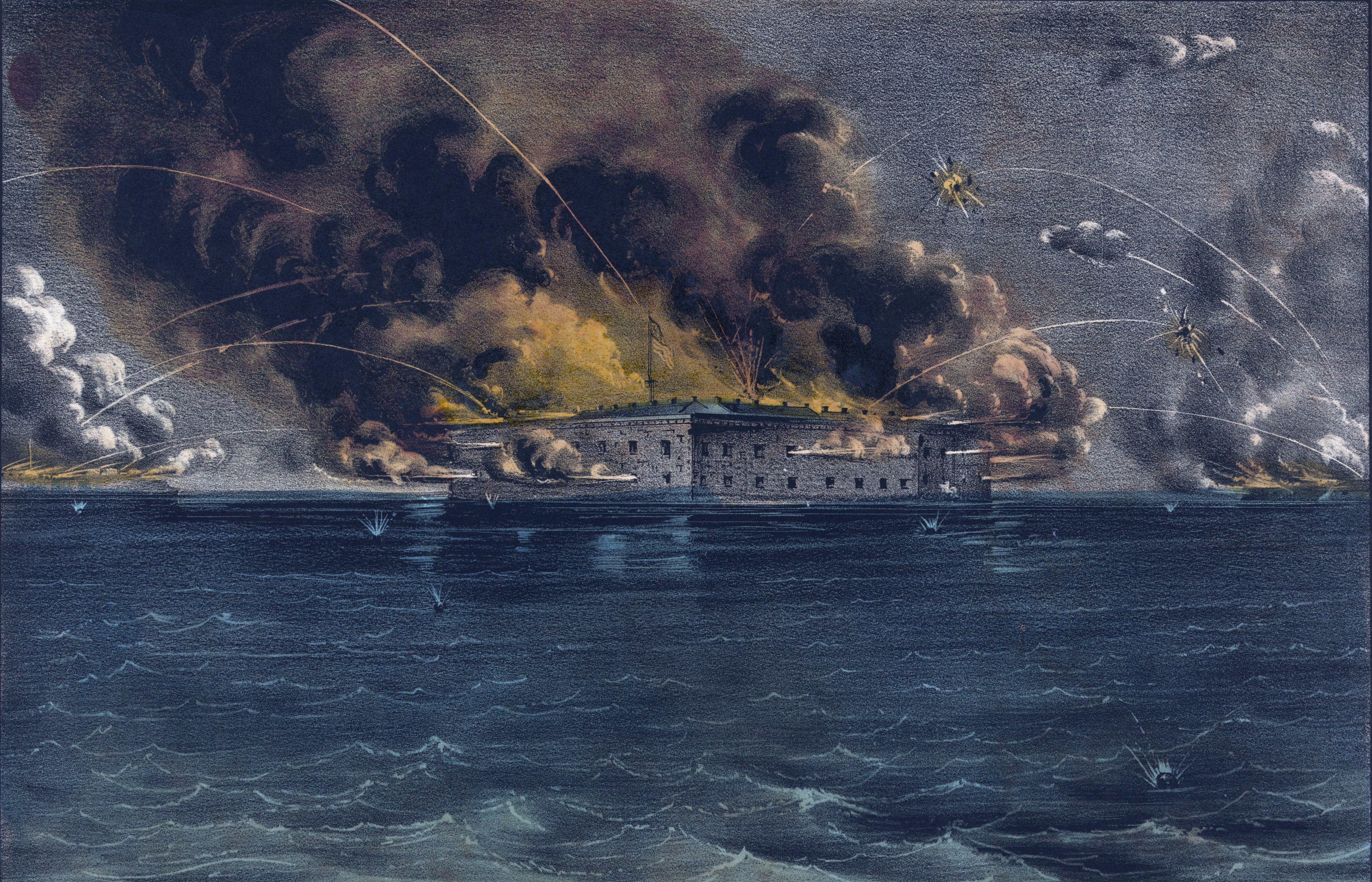Irrepressible Conflict or Blundering Generation? The Comi…
Por um escritor misterioso
Last updated 28 março 2025

Shown here are images from the exhibit "Irrepressible Conflict or Blundering Generation? The Coming of the Civil War," on display in the Marshall Gallery (first floor rotunda) and the Special Collections Research Center Lobby in Swem Library at the College of William and Mary. The exhibit will be on display from April -September 2011. The following is taken from the label text presented in this case: The Kansas-Nebraska Act of 1854 and Bleeding Kansas: Democrat Stephen Douglas of Illinois, who had been Henry Clay’s top lietenant during the crisis of 1850, did not intend to stir up sectional conflict when, as chair of the Committee on Territories, he proposed that Kansas and Nebraska be organized as territories on the basis of popular sovereignty. He just wanted to build a railroad west from Chicago, and he needed territorial governments to be established to do that. But he blundered. By the Missouri Compromise, which the act repealed, this territory was supposed to be free. After intense debates, Congress passed the Kansas-Nebraska Act in 1854. The consequences were far-reaching. The national political parties began breaking up, leading to more regionally-based parties. Northern Whigs and some Northern Democrats formed the new Republican Party, opposed to the expansion of slavery into the territories. The Democratic Party, having lost many Northern members, became decidedly more Southern. Both North and South tried to claim Kansas under popular sovereignty. Northern abolitionists rushed antislavery settlers to Kansas, while proslavery “Border Ruffians” poured across the border from Missouri to seize control of the elections. Both groups organized governments and applied for territorial status. President James Buchanan supported the pro-slavery Lecompton government, but Congress refused to accept it. As the displayed scrapbook shows, Kansas disintegrated into civil war. Dred Scott v. Sandford, 1856-1857: The Supreme Court blundered in the case of Dred Scott v. Sandford. Scott was an enslaved man, once the property of the Blow family of Southampton County, Virginia. A later owner had taken him into a free territory and a free state, where he lived for some years, then returned him to a slave state. Scott sued for his freedom. Supreme Court Chief Justice Roger Taney, a Marylander who had freed his own slaves, nonetheless sympathized with the South and wanted to settle the issue once and for all. Instead of simply refusing Scott’s appeal on the basis that he was not a citizen and had no right to sue in courts (which is what Taney believed), Taney’s majority opinion ruled that the Missouri Compromise of 1820 was unconstitutional, because Congress could not ban slavery in any territory, and therefore Scott remained a slave. Far from settling the issue, Taney made it worse. The decision enraged many people throughout the North and not just abolitionists. For Dred Scott personally, the result was better; the Blow family, now living in Missouri and antislavery, regained ownership of Scott and freed him. John Brown’s Raid on Harper’s Ferry, 1859: In October 1859, John Brown, an extremist who had participated in Bleeding Kansas, organized a raid by a small, racially-mixed group of abolitionists on the U.S. arsenal at Harper’s Ferry in Virginia [now West Virginia], hoping to ignite a slave rebellion. U.S. Marines, led by Robert E. Lee, soon captured him. Northerners, including abolitionists, initially repudiated his actions. But during his trial for treason against Virginia and his subsequent execution in December 1859, he became a martyr and a hero to many. Southern whites reacted with horror, convinced that many Northerners wanted to kill them. Included in this section are the top part of a pike used by Brown’s raiders and various documents. Two letters to Virginia Governor Henry Wise (W&M Board of Visitors 1848)—one from a Virginia sympathizer living in New York and another from a Northerner—warn of possible raids to free Brown from the Charles Town jail. William Taliaferro (W&M 1839/1842, later rector) commanded the Virginia militia that protected the area during this tense time; the bound volume records orders for the day of Brown’s execution. John Floyd and Corruption: The corruption of the Buchanan administration further weakened the Democratic Party and handed Republicans another issue heading into the election of 1860. The most corrupt reputedly was Secretary of War John Floyd of Virginia. He kept track of his Washington social life in this ledger, with a street-by-street listing of the people he visited in 1858. It is open to New Jersey Avenue, where Vice President John Breckinridge and Senator Stephen Douglas lived in adjoining houses; they would both be candidates in the presidential election of 1860. The Election of 1860 and Secession of the Deep South: The election of 1860 demonstrated just how divided the nation had become. In the North, Republican Abraham Lincoln ran against Democrat Stephen Douglas, and in the South, Democrat John Breckinridge ran against Constitutional Unionist John Bell. Southern extremists did not believe Lincoln, the winner, when he vowed that he did not wish to interfere with slavery where it already existed. South Carolina seceded in December 1860, followed by Mississippi, Florida, Alabama, Georgia, and Louisiana in January and Texas in February, all before Lincoln was inaugurated on March 4. In February, they established the Confederate States of America, with its capital at Montgomery, Alabama. As can be seen in the “Union Poem” and Botetourt resolutions, many Virginians wanted to remain in the Union. William & Mary Men Try to Save the Union, 1860-1861: From the election in November to Lincoln’s inauguration in March, the country suffered a lack of leadership. President Buchanan refused to exercise any of his presidential authority. Lincoln had none to exercise, since he was not yet president, and he became an object of ridicule when he sneaked in disguise at night through Baltimore to avoid a rumored assassination plot. William and Mary men did their best to fill the leadership void and save the nation. In December, Senator John J. Crittenden (W&M 1805/1807) of Kentucky proposed a compromise that would have extended the Missouri Compromise line to the Pacific Ocean and would have applied to any lands acquired in the future, provided a federal slave code, and banned personal liberty laws. It was not acceptable to many in the North, including Lincoln. Virginia’s legislature invited the states to send delegates to a peace convention in Washington in February, chaired by W&M rector John Tyler (W&M 1806). This convention also failed to achieve compromise.

PDF) The Irrepressible Conflict: Reasons for the inevitability of the American Civil War

The Class Politics of the Civil War
The irrepressible conflict or the Republican barge in danger. [graphic].

Torch of New Russia - by Peter Nimitz - Nemets

Historians and the Civil War Era Historiography and the quest for scholarly understanding. - ppt download

PDF) The Irrepressible Conflict: Reasons for the inevitability of the American Civil War

Dixie Editor” v. UDC on Muzzey's history (1921), by Wilhelm Kühner, Kühner Kommentar an Amerika

Origins of the American Civil War - Wikipedia

HISTORY HIST 206 : UNITED STATES HISTORY 11 - Ashford University

Topic 5 The American Civil War - ppt download

American History for Truthdiggers: A Broken Union (1851-1861) - Truthdig

The Souls of Black Folk Free Self Help Legal Information for Missouri Residents

Expanding the Slaveocracy

Kenneth Stamp article - n/a - Kenneth M. Stampp THE IRREPRESSIBLE CONFLICT Kenneth M. Stampp, - Studocu
Recomendado para você
-
 Irrepressible Conflict or Blundering Generation? The Coming of the Civil War28 março 2025
Irrepressible Conflict or Blundering Generation? The Coming of the Civil War28 março 2025 -
Lincoln and Prevention of War. Which 'blundering Generation'? What - Ralph Godfrey Lindstrom - Google Books28 março 2025
-
 What the North Got Wrong - The New York Times28 março 2025
What the North Got Wrong - The New York Times28 março 2025 -
 The causes of the Civil War;: Institutional failure or human blunder? (American problem studies): Hans L. Trefousse: 9780030833762: : Books28 março 2025
The causes of the Civil War;: Institutional failure or human blunder? (American problem studies): Hans L. Trefousse: 9780030833762: : Books28 março 2025 -
 The Explorers: A Story of Fearless Outcasts, Blundering Geniuses, and Impossible Success - Dugard, Martin: 9781451677584 - AbeBooks28 março 2025
The Explorers: A Story of Fearless Outcasts, Blundering Geniuses, and Impossible Success - Dugard, Martin: 9781451677584 - AbeBooks28 março 2025 -
 Gen. Yahya Khan's blundering regime comes to an end28 março 2025
Gen. Yahya Khan's blundering regime comes to an end28 março 2025 -
 The American Civil War, Teaching American History Session September 17, 2010 Stephen E. Towne IUPUI. - ppt download28 março 2025
The American Civil War, Teaching American History Session September 17, 2010 Stephen E. Towne IUPUI. - ppt download28 março 2025 -
 Origins of the American Civil War - Wikipedia28 março 2025
Origins of the American Civil War - Wikipedia28 março 2025 -
 Generation Of Giants: The Story Of The Jesuits In China In The Last Decades Of The Ming Dynasty28 março 2025
Generation Of Giants: The Story Of The Jesuits In China In The Last Decades Of The Ming Dynasty28 março 2025 -
 PDF) The Irrepressible Conflict: Reasons for the inevitability of28 março 2025
PDF) The Irrepressible Conflict: Reasons for the inevitability of28 março 2025
você pode gostar
-
 Dozens of Dragon Ball GT references have already been found in the Super Baby 2 and Super Saiyan 4 Gogeta trailer for Dragon Ball FighterZ28 março 2025
Dozens of Dragon Ball GT references have already been found in the Super Baby 2 and Super Saiyan 4 Gogeta trailer for Dragon Ball FighterZ28 março 2025 -
 Watch Haikyuu!! To the Top Episode 3 Online - Perspective28 março 2025
Watch Haikyuu!! To the Top Episode 3 Online - Perspective28 março 2025 -
 Attack on Titan: Final Season Reveals Surprising Runtime for Anime's Return28 março 2025
Attack on Titan: Final Season Reveals Surprising Runtime for Anime's Return28 março 2025 -
 Discover art works created by designer asdasd asdasd28 março 2025
Discover art works created by designer asdasd asdasd28 março 2025 -
 SF & Fantasy Manga – 5 Publisher_KADOKAWA – Japanese Book Store28 março 2025
SF & Fantasy Manga – 5 Publisher_KADOKAWA – Japanese Book Store28 março 2025 -
 Uo Uo No Mi kaido28 março 2025
Uo Uo No Mi kaido28 março 2025 -
 Another word a day by Christina - Issuu28 março 2025
Another word a day by Christina - Issuu28 março 2025 -
massa amarela na garganta|Pesquisa do TikTok28 março 2025
-
 Dica: Quatro filmes anime para você assistir na Netflix e se28 março 2025
Dica: Quatro filmes anime para você assistir na Netflix e se28 março 2025 -
 Vestido SEM COSTURA para BARBIE e outras BONECAS/Diy28 março 2025
Vestido SEM COSTURA para BARBIE e outras BONECAS/Diy28 março 2025
